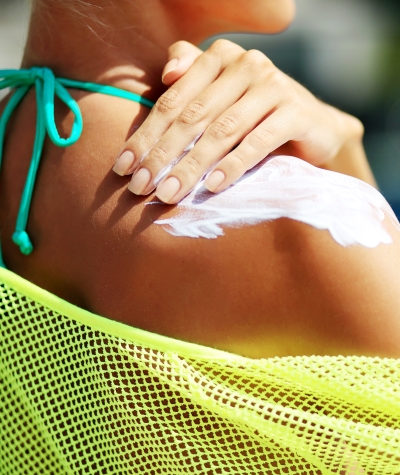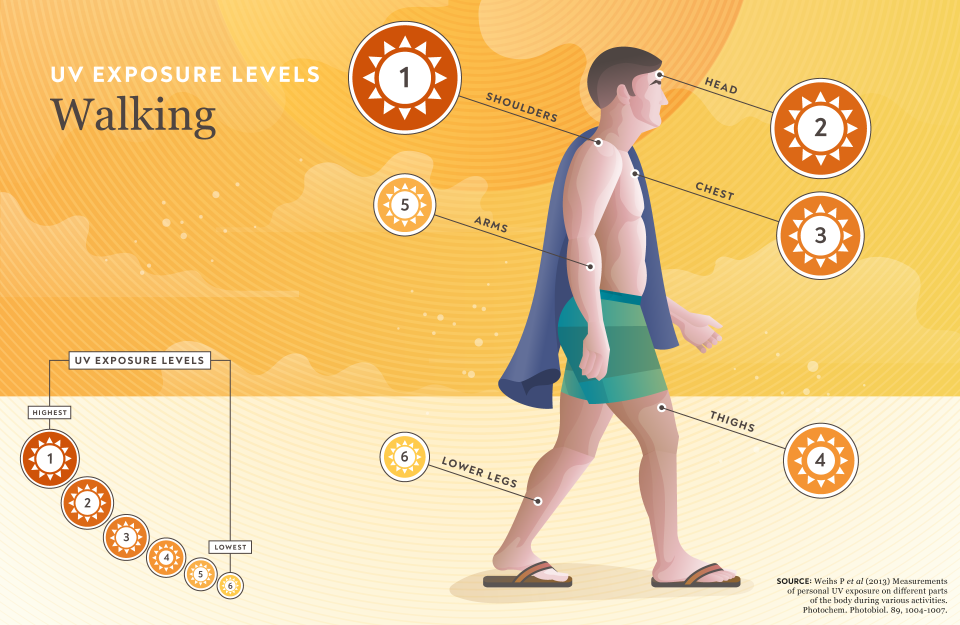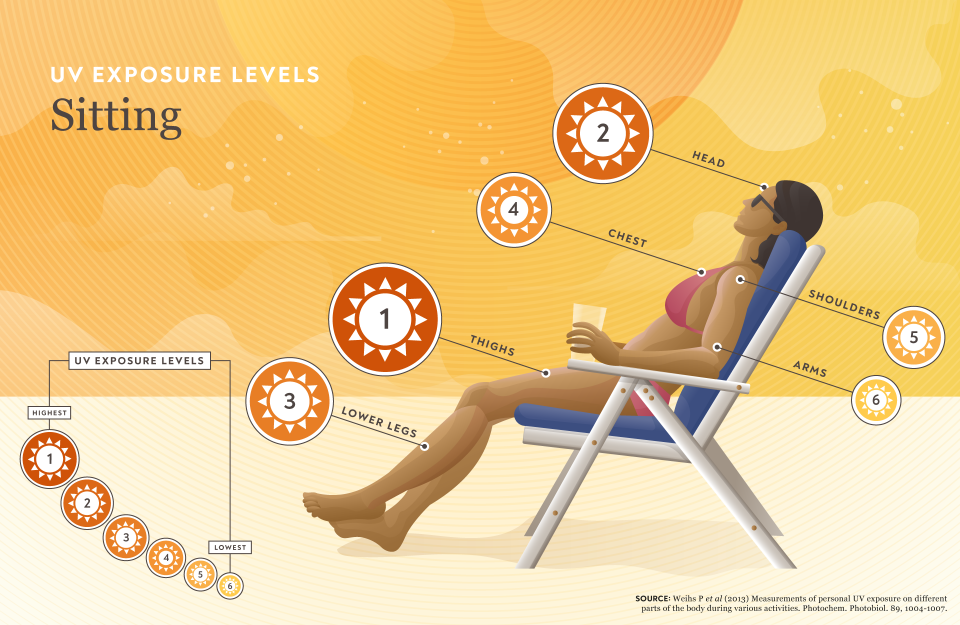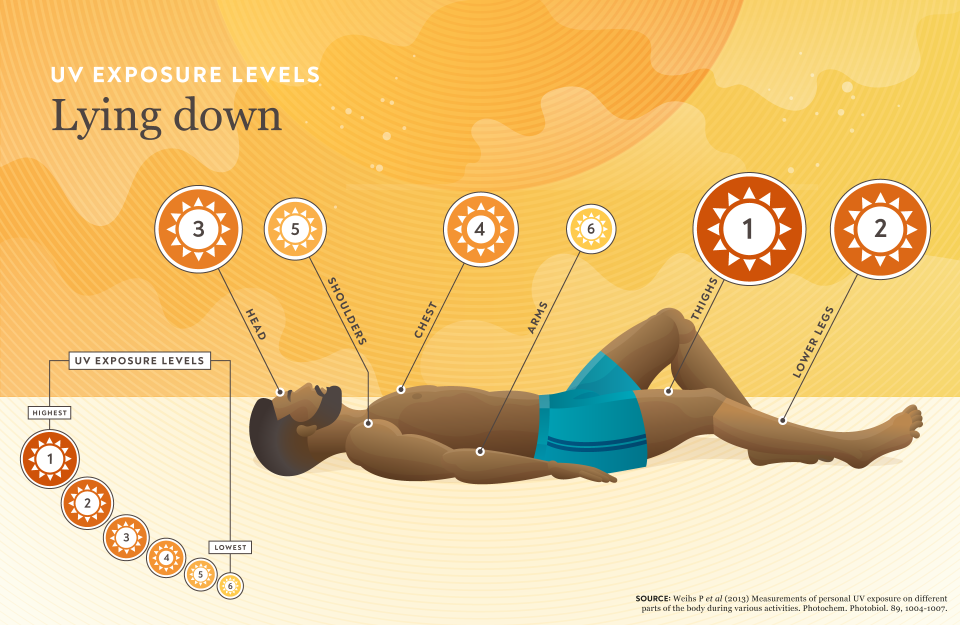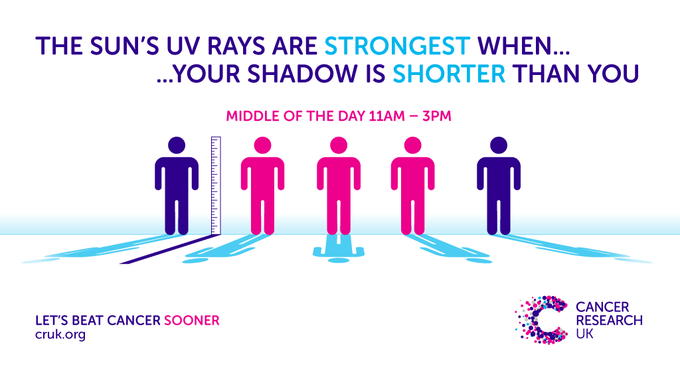UV and Me is a page designed to teach you all about UV rays, where on the body you're most exposed, and how to identify your level of exposure through the UV index. The sections of this page are:
- What are UV rays?
- What are our most exposed areas?
- What are the different types of UV filters?
- The UV index
What are UV rays?
Most of the damage from the sun comes from UV (ultra violet) rays - UVA and UVB.
UVB rays penetrate into the outer layer of the skin and damages the cells resulting in inflamed skin or sunburn.
UVA rays penetrate more deeply causing direct damage to the skin's supporting tissues, which contributes to the signs of skin ageing.
Therefore, we need to be protected against each of these types of UV rays. This section shows how sunscreen helps protects us from harmful UV rays of the sun and why we can be confident in the protection labelled on-pack.
What are our most exposed areas?
These following graphics show which areas of the body are exposed to the highest and lowest intensity of UV rays when we are going about different daily activities such as walking, swimming or relaxing in the garden or on the beach. This can help us to be especially vigilant about protecting those areas of skin:
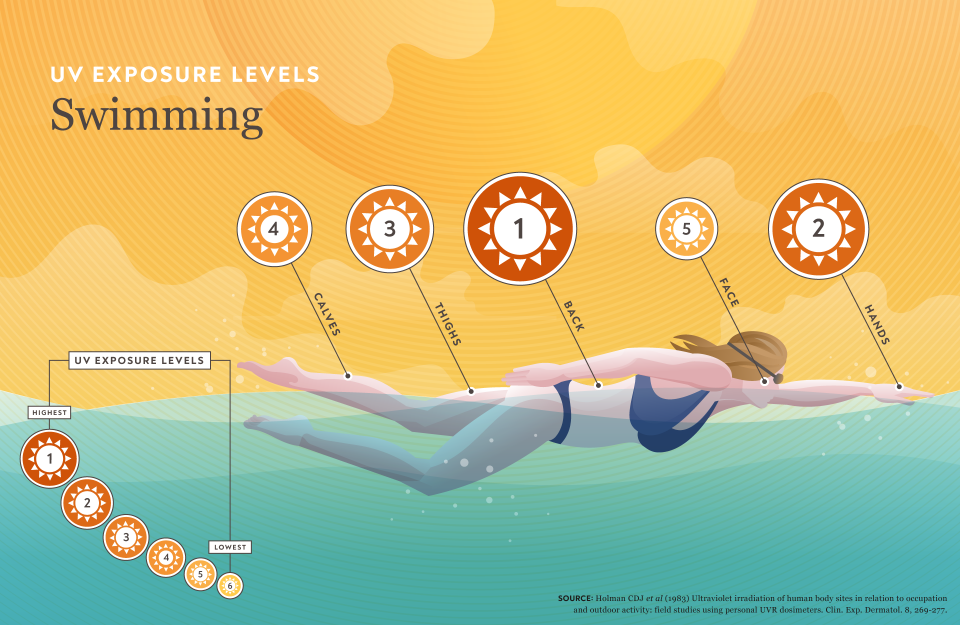
However, it's really important to remember to apply the right amount of sunscreen when you're out doing any of these, or other, daily activities, and to reapply it regularly. For more advice on staying safe in the sun, see our sun safety tips.
Credit: Cancer Research UK
What are the different types of UV filters?
The key ingredients of sunscreens are UV filters. Their job is to help cut down the amount of ultraviolet (UV) rays reaching the skin.
They typically fall into two main categories:
-
synthetic or organic filters, which absorb UV light; and
-
mineral or inorganic filters, such as titanium dioxide, which mainly reflect UV light.
Because different UV filters tend to be effective against different wavelengths of UV, most sun protection products include filters for both UVA and UVB. This means they provide a broad spectrum of protection across the whole range of UV rays.
The UV index
When checking the weather forecast, you might have noticed something called the UV index showing you whether UV intensity is going to be low, medium, high or very high.
The UV index is an internationally standardised scale measuring the strength of UV rays. Often, the UV index is presented as low, medium, high or very high but it can also be presented as a numerical scale.
The UV index is designed to warn people that they might be at increased risk of damaging UV rays on certain days, and to take steps to protect themselves from the sun.
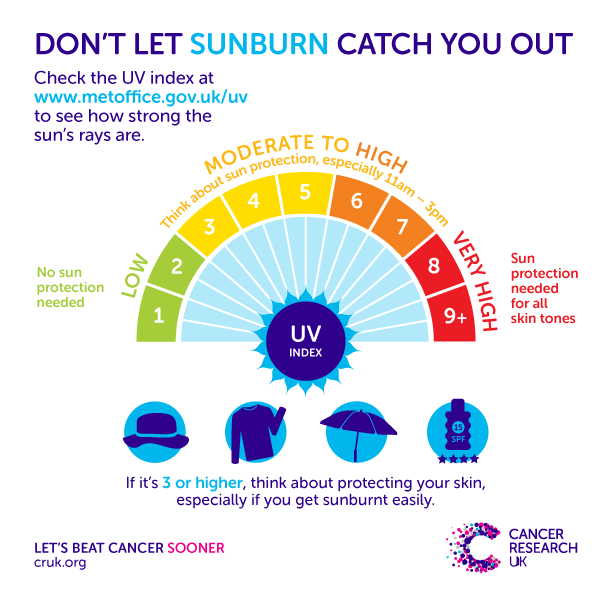
Credit: Cancer Research UK

